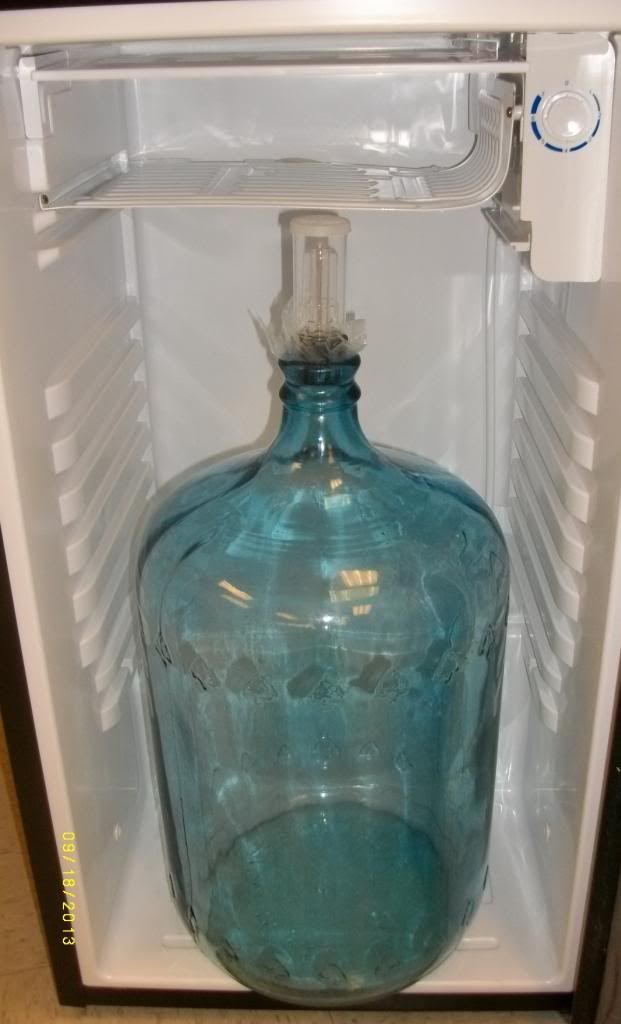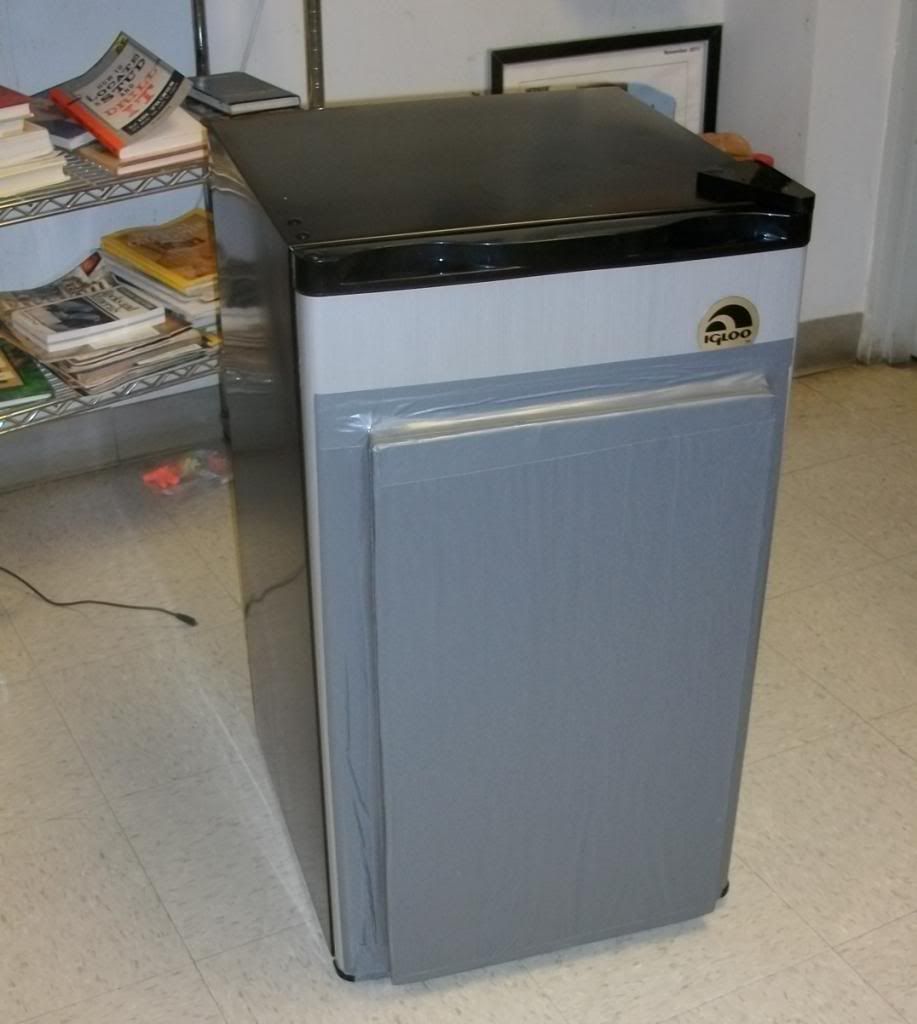JoppaFarms
Well-Known Member
- Joined
- Dec 27, 2012
- Messages
- 378
- Reaction score
- 31
If you have an in-line fuse (like you should) you have nothing to worry about.

If you have an in-line fuse (like you should) you have nothing to worry about.
It can still spark with a fuse or breaker. Just not a good practice
Sure, and just about any material is flammable to some point. A cigar box should be fine. I wouldn't worry about it. Just do it right the first time.
The flammability of an old dried out cigar box versus an electrical junction box are a bit different
The flammability of an old dried out cigar box versus an electrical junction box are a bit differentAnd doing it right the first time doesn't mean anything when you're working with cheap unreliable screw terminals on the stc1000.

I have been trying to think of a liner that could go in the box and make a little more fire resistant. Fiberglass can be time consuming and the other options are too $$$.
Check your smoke detectors function and go with it.

This is trueBUT! Who uses an electrical junction box for this project? Seems a bit overkill to me...
http://nordeastbrewersalliance.file...age_temp_controller_creation_instructions.pdf
Great reference with info on how to wire the indicator lamps as well. I used all the part #s in this PDF and it came together perfectly.
One other question. I am looking into a thermowell for my fermenter as well. Does anyone have the diameter on the sensor probe that ships with the STC-1000? I have 2 choices in the thermowell I am looking at. I can get one with a .25" diameter or a .3" diameter. I'd like to go with the smaller one if the STC-1000's probe is going to fit.
E_Marquez said:I use a Brewers Hardware 16" straight wall thermowell for my STC-1000 with black plastic sensor. http://www.brewershardware.com/16-Stainless-Steel-Thermowell.html ID = .305" OD= .375
leekohlbradley said:That is really neat, because the probe that comes with it isn't good for much, frankly! You just insert the probe in the stainless tube and seal it somehow? Do you have to recalibrate the STC-1000?
This allows the probe to be surrounded by your fermenting beer, giving you more precise control of your ferm temp. By being inside the beer, your STC1000 turns your heating and cooling devices on/off depending on beer temp, not ambient air temp
The issue is alleged.. The freezer cooling system runs until temp sensor in the center of 5 gal of liquid reaches the target temp.From a "gut feeling" perspective, it doesn't feel right that a probe immersed in the liquid would be less effective than a probe outside the carboy. I understand the temp of a larger volume of liquid changing more slowly. But wouldn't the natural currents in the beer, along with those caused by the agitation of fermentation effectively mix the beer, causing the temperature to stabilize throughout the carboy?
I am putting together a whole system with the fridge, an STC1000, a thermowell and a heat source. It shouldn't be too hard to do a few tests with just water in a carboy to see which method proves more stable.
The issue is alleged.. The freezer cooling system runs until temp sensor in the center of 5 gal of liquid reaches the target temp.
At that point the freezer has cooled the chamber and most of the liquid to a temp colder then the target temp.
No idea who makes this claim,,,,, but it's not I.
Oh and the whole deal about fermenting beer being higher by up to 10 deg has not proved out either with my last three batches. Perhaps the temp differential is more significant in non temp controlled high ambient temp fermentation situations. (like trying to ferment in a 70+ deg area using a very aggressive yeast)
leekohlbradley said:Those are Newegg Marketplace sellers, so who knows where they ship from. I noticed the first one also sells on ebay, amazon, etc. Still no Fahrenheit either :-/
Just stick a carboy thermometer on all your carboys. Now you have a double check for your thermostat AND a F to C conversion chart.
IMO, those provide poor accuracy during a cooling or heating cycle, since they are not thermally isolated from the chamber air. In-between cycles they are fairly accurate. YMMVJust stick a carboy thermometer on all your carboys.....
The STC 1000 I got this week (from one of the amazon links earlier in this thread) appears to have shipped from Las Vegas.
I'm trying to understand why a thermowell into the middle of the beer would cause cycling. Normally, thermal mass is your friend if you want steadier temperatures. And although liquids sometimes stratify vertically, I seriously doubt you'll find a measurable difference between the temperature in the center of a carboy vs. temperatures at the sides.
I can think of only two possibilities so far: one, the metal thermowell is conducting ambient temperatures to the probe at its end faster than the beer can heat or cool it. Doubtful, but I guess possible. The other, more likely possibility is that there's enough air circulation in the thermowell to mingle with the ambient air outside it. If that's the case, closing the upper end after the probe is dropped into it should take care of the problem. Shouldn't take much - silicone, bubble gum, a piece of tape....
I think that with the fairly big patch of foil/bubble wrap insulation over the probe, the temperature read I get is actually for the beer itself. Of course my 5 gallon carboy is in a very small converted fridge, one that doesn't have enough thermal mass of its own to sneeze at. In fact, when the carboy is full it weighs more than the entire fridge does - including the compressor.I don't have direct experience but have studied a lot of engineering physics. I would expect this issue would be prevalent in systems with a high thermal mass besides the carboy itself. What's happening is that in order to get the liquid down to temp, the fridge would need to stay on until the temperature at the probe is satisfied. But at that point, the rest of the mass is at a high temperature differential to the carboy. (The walls and internals of the fridge are a lot colder than the carboy.) So when the STC shuts off, the temperature continues to coast down, and then the STC will turn on the heat to compensate. I think by taping the probe the way you did, you found a happy average between the thermal mass of the carboy and that of the cooling agent. It's the same for heat of course.


Of course my 5 gallon carboy is in a very small converted fridge, one that doesn't have enough thermal mass of its own to sneeze at. In fact, when the carboy is full it weighs more than the entire fridge does - including the compressor.
BeerGrylls said:I don't have direct experience but have studied a lot of engineering physics. I would expect this issue would be prevalent in systems with a high thermal mass besides the carboy itself. What's happening is that in order to get the liquid down to temp, the fridge would need to stay on until the temperature at the probe is satisfied. But at that point, the rest of the mass is at a high temperature differential to the carboy. (The walls and internals of the fridge are a lot colder than the carboy.) So when the STC shuts off, the temperature continues to coast down, and then the STC will turn on the heat to compensate. I think by taping the probe the way you did, you found a happy average between the thermal mass of the carboy and that of the cooling agent. It's the same for heat of course.
Enter your email address to join: